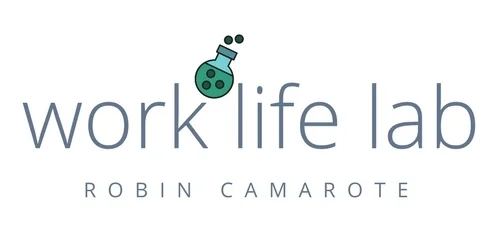A client asked me this morning to review and comment on his organization’s strategic plan template. A template? Wait, what? After a bit of (polite) questioning, I learned that this client's organization director is asking several sub-units to draft strategic plans. Once completed, these plans will be rolled up into a master strategic plan.
I wanted to respond with something helpful but the thoughts racing through my mind went something like... "You can’t template a strategic plan. I mean, sure, there are a handful of broad headers that you could type up but to what end? Creating a template would exacerbate one of the biggest problems with our typical approaches to strategic planning. And that problem is more focus on the end document than the process of discovery, team building, creative thinking, and cross-discipline input.
Back to my client... he elaborated that he was looking for some thought-provoking questions to include in an annotated outline. The outline would be the basis of a strategic planning meeting agenda and would be during the session to facilitate discussion. Sigh. Ok, that makes sense. Based on his request, I jotted down some basic strategic planning guidelines and the kind of questions you should be asking of your team.
“Bottom up planning is different and worth trying for organizations really needing or wanting buy-in. It’s not fast or neat or clean but you will get a pretty good sense of what gets people interested and excited about the mission. ”
Before doing “save as” and creating your spanking new strategic plan file, set some time parameters. As arbitrary as they might seem, establishing short but reasonable boundaries around the effort is tremendously helpful to participants. Without sideboards, strategic planning can and will go on forever and eventually be crushed under its own weight So, I’d suggest that you set a deadline of about a week-- 2 max. Seriously. You (meaning all the participants in your organization) really do not need more time. Simple and clear beats perfect and polished.
Ok, here you go...
Problem Statement
- What are two problems we're trying to solve? (Sit back and enjoy the range of answers. Giving everyone 2 helps them focus and provides a little wiggle room)
- How do other comparable organizations describe the same or similar problem? (Include for a quick compare and contrast exercise.)
Current State and Desired End State
- Briefly describe where the organization stands today in the face of this problem.
- In an ideal world, where would you be and by when? Answering this question can and will consume most of the discussion. You can only include this question if there is a pretty good sense of the options. If the problem is truly unsolved, additional research and exploration is needed. A good meeting but just one step back. Another thing... Personally, I recommend that you keep the goals modest and the timelines relatively near-term. Multi-year strategic plans have very limited practical value.
Stakeholders and Customers
- Who or what is impacted by the problem? Try to name the biggies and cut people off before you get too far past 6-8.
- Within the organization, who owns the biggest pieces of trying to solve this? (Good list for pulling in future reviewers and collaborators)
- Who are you trying to please, support, engage, or help? These are your customers (even if you’re not “selling” anything.) Spend most of the time you have talking about this group then take another pass through your decisions and tweak from the customer’s point of view.
- Besides you, who outside of the organization cares about this outcome?
Opportunities and Limitations
- What events can you reasonable anticipate in the set time frame that you want to take advantage of or avoid. Keep it short and snappy.
- So what’s the path?
- Given all the thoughts above, provide some sense of the range of options considered. Which path best takes advantage of all of the resources at your disposal? This is your strategic path. Write this down—on paper if that’s easiest.
Evaluation Points
- What logical evaluation points along the path exist? Mark these roughly on your calendar and commit to a quick (less than 1 meeting) evaluation of how you’re doing.
Have fun with it. To me, one of the most commonly missed opportunities with strategic planning is that we all take it too seriously and limit input to only the coolest kids in the office. Lame. Instead, even the most modest effort to make it interesting, take some guesses, accept some risk, and integrate as many viewpoints as possible will make this different from the last time.
Oh and encourage participants/contributors not to get too hung up on the language and meaning of strategic. I’d say that a plan is strategic if it reflects multiple viewpoints and illuminates a path forward-- given the best information available at the time. A project plan would follow and describe the step-by-step once this approach is finalized.





